How Smart Dispatching Improves Fuel Efficiency and Route Planning
Smart dispatching technology helps fleet managers cut fuel costs and optimize routes through real-time decision making. For trucking companies, delivery services, and field service businesses looking to reduce operational expenses, smart dispatching offers immediate and long-term benefits. This guide explores how automated dispatching systems minimize idle time and fuel consumption, simplify complex route planning across multiple vehicles, and provide practical implementation steps for companies of any size.
Understanding Smart Dispatching Technology

Smart Dispatching Technologies for Fleet Optimization
Real-Time Vehicle Tracking
Smart dispatching starts with real-time GPS tracking. Dispatchers gain instant visibility into each vehicle’s exact location, speed, and status — no more vague updates like “somewhere near Route 66.” Live tracking allows immediate responses to customer inquiries, accurate ETAs, and better decision-making. Many platforms also display live traffic data, enabling dispatchers to reroute vehicles before they hit congestion.
AI-Powered Decision-Making
Gone are the days of pin-covered maps. AI algorithms now analyze massive datasets — historical trends, weather, traffic, driver behavior — to optimize routes and assignments. These systems can predict delays, recommend fuel stops based on cost, and reroute trucks proactively. For example, if a driver consistently runs late on certain routes, the system adapts. Smart AI doesn’t just react — it anticipates and improves over time.
Integration with Fleet Tools
The real power of smart dispatching comes from seamless integration with other systems. Modern platforms connect with maintenance trackers, telematics, fuel cards, HR, and payroll systems. This means smarter load assignments (e.g., skipping trucks due for service or drivers lacking specific certifications) and less manual data entry. When a driver accepts a load, all departments are automatically updated — from billing to customer portals.
Cloud-Based Solutions
Cloud dispatching provides anytime-anywhere access, perfect for remote teams or companies with multiple locations. There’s no need for bulky servers or constant IT intervention. Updates and new features roll out automatically, keeping systems current and secure. Scalable pricing lets small fleets access tools once reserved for large enterprises.
Fuel Efficiency Gains Through Smart Dispatching
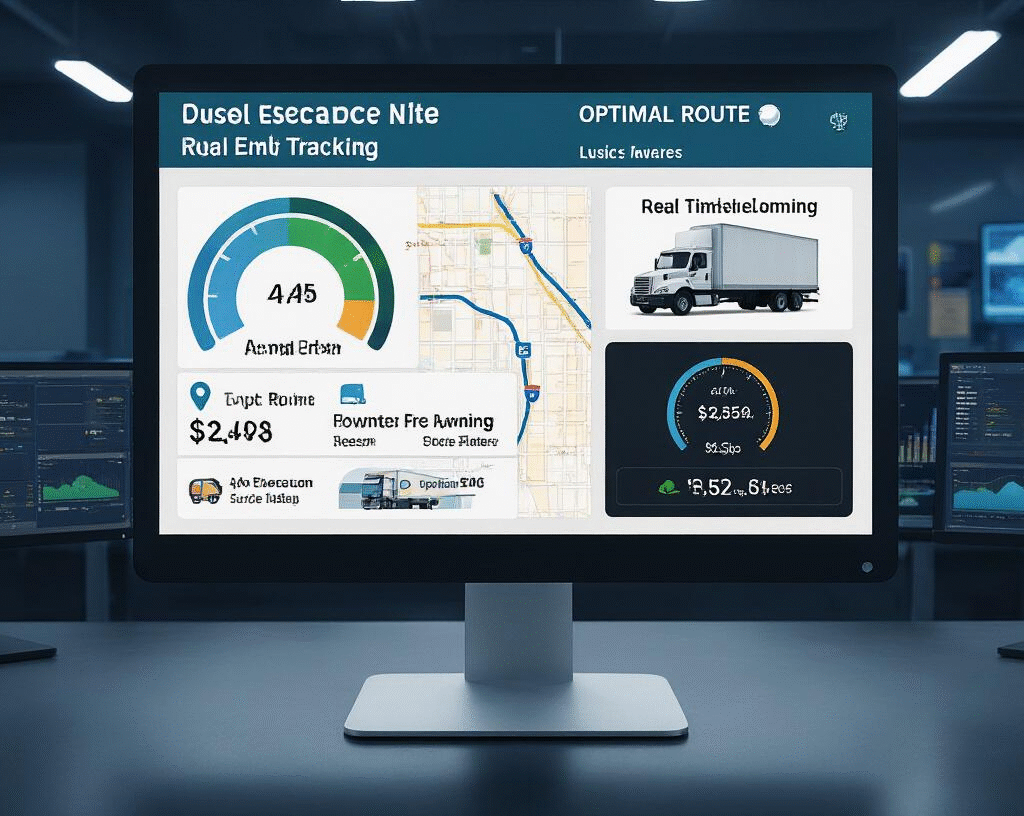
A. Reducing Idle Time and Unnecessary Stops
Idling burns nearly a gallon of fuel per hour — a costly waste for fleets. Smart dispatching uses real-time traffic data and strategic scheduling to cut idle time. Dispatchers reroute drivers around congestion, schedule off-peak pickups, and coordinate arrivals to avoid dock delays. A Denver-based logistics firm cut idle time by 37% using geofencing to alert facilities 15 minutes before arrival, ensuring quicker turnarounds.
B. Optimizing Engine Performance with Data Analytics
Modern trucks generate vast amounts of engine data — smart dispatching platforms tap into this to improve fuel efficiency. When a driver over-revs on certain routes, targeted coaching can fix it. If a vehicle shows unusual fuel use, maintenance is alerted. Over time, the system learns which drivers, vehicles, and routes are most fuel-efficient under specific conditions.
C. Preventing Excess Fuel Use with Load Optimization
Heavier or poorly distributed loads increase fuel burn. Smart systems analyze shipments to balance loads across the fleet, combine partial shipments, and assign the most suitable vehicle. A flatbed company in Texas saved 9% in fuel costs by optimizing load planning — replacing half-empty runs with consolidated, weight-balanced hauls.
D. Quantifiable fuel savings case studies
The numbers don’t lie. Look at what happened when these companies went all-in on smart dispatching:
| Company | Industry | Implementation | Fuel Savings |
|---|---|---|---|
| Rapid Delivery | Last-mile | Route optimization + idle reduction | 14.3% annually |
| Mountain Transport | Long-haul | Load balancing + driver coaching | 11.7% annually |
| City Freight | Urban distribution | Real-time rerouting + stop sequencing | 17.2% annually |
Mountain Transport’s approach deserves special mention. They combined smart dispatching with driver incentives, sharing 30% of fuel savings with drivers who hit efficiency targets. Their drivers became active participants in saving fuel, not just recipients of directions.
E. ROI calculations for dispatch technology investments
Thinking about investing in smart dispatching but worried about the upfront costs? Let’s break down the math.
For a fleet of 20 trucks averaging 100,000 miles annually per vehicle:
- Average fuel consumption: 6.5 MPG without optimization
- Potential improvement: 10% with smart dispatching
- Annual fuel usage: 307,692 gallons
- Savings after implementation: 30,769 gallons
- At $3.50/gallon: $107,692 annual savings
Factor in reduced maintenance costs from better driving habits and fewer empty miles, and many fleets see complete ROI within 8-12 months.
The key is choosing technology that scales with your operation. Small fleets might start with basic GPS-enabled dispatch systems at $50/month per vehicle, while larger operations benefit from integrated platforms that combine dispatch, telematics, and analytics.
Route Planning Enhancements
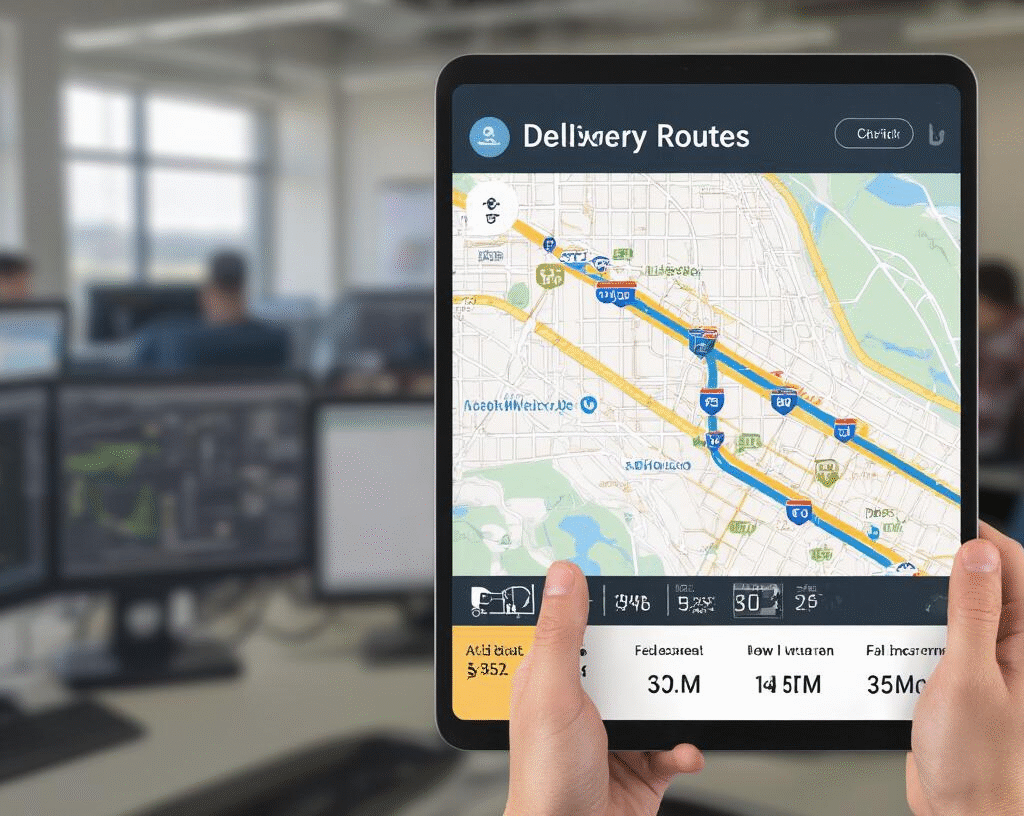
Smart Dispatching: Dynamic Routing for Maximum Fuel Efficiency
A. Real-Time Route Adjustments
Smart dispatching adapts routes on the fly. When accidents or road closures hit, drivers aren’t stuck idling in traffic — platforms reroute them instantly using live data from traffic sensors, GPS, and even social media. This minimizes delays and fuel waste. With trucks idling burning up to 0.8 gallons of fuel per hour, dynamic rerouting prevents serious cost leaks.
B. Traffic Pattern Prediction
Beyond reacting, smart systems predict congestion before it happens. Using historical traffic data, they suggest alternate routes or adjust schedules to avoid rush-hour hotspots. When new roadworks pop up, the system quickly learns and updates routes. This reduces stop-and-go driving — a major fuel drain — and ensures smoother, more efficient trips.
C. Weather-Responsive Routing
Weather impacts fuel efficiency significantly. Headwinds, rain, or snow increase fuel consumption or battery drain. Smart dispatchers integrate live forecasts to route drivers through safer, more efficient paths — even if slightly longer. For electric vehicles, these tools adjust for cold-weather range drops and plan charging stops accordingly. Over time, systems learn what works best, continually refining routing strategies for all weather scenarios
Dispatching for Multiple Vehicle Coordination
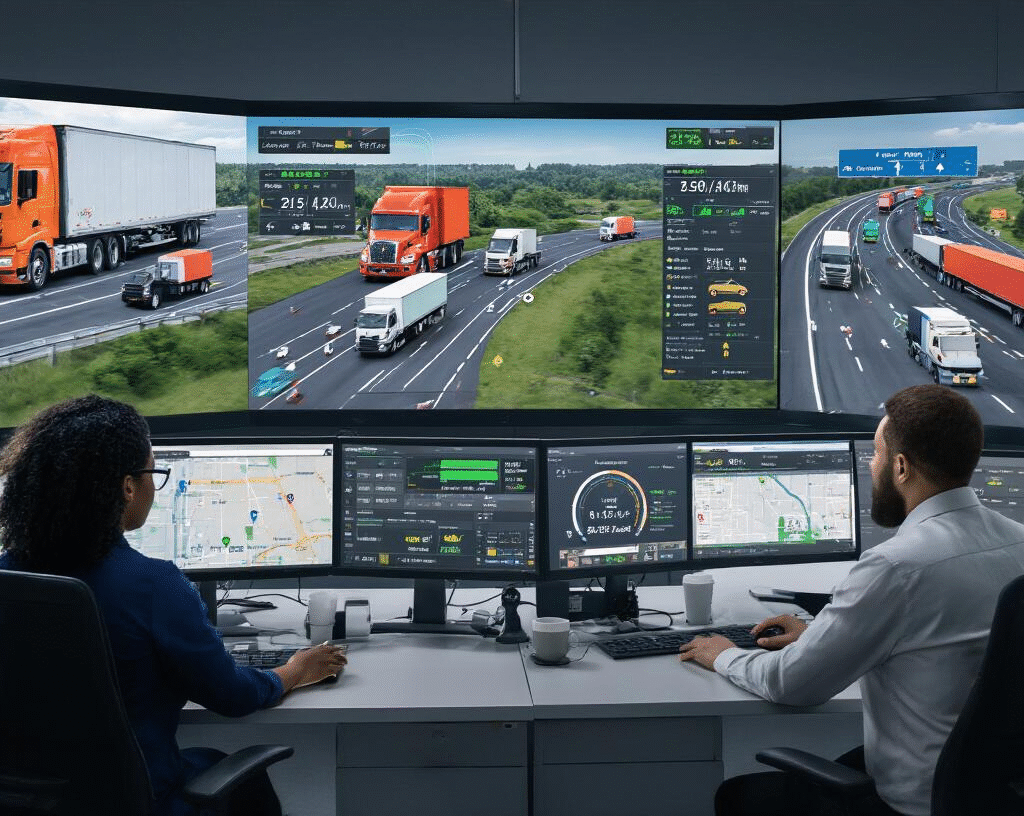
Synchronized fleet movements for maximum efficiency
Managing multiple vehicles is like choreographing a dance. When one truck zigs, another needs to zag – perfectly timed to save fuel and time.
The magic happens when your dispatching system connects all vehicles in real-time. Picture this: Driver A is stuck in unexpected traffic while Driver B is ahead of schedule. Smart dispatching automatically redistributes stops between them, saving 15-20 minutes per driver daily.
Companies that nail synchronized movements see up to 17% reduction in overall fleet mileage. That’s not small change when you’re running dozens of vehicles.
Load sharing and transfer optimization
Ever seen two half-empty trucks driving similar routes? What a waste!
Smart dispatching eliminates this problem by strategically consolidating loads. Instead of:
- Truck A running at 40% capacity
- Truck B running at 50% capacity
- Both burning excess fuel
You get one truck running at 90% efficiency while the other handles different priorities.
The real game-changer is dynamic transfer points. These are strategic locations where drivers can exchange packages without returning to the depot. We’ve seen companies cut their fuel costs by 22% just by implementing these exchange points.
Preventing route overlaps and redundancies
Nothing screams inefficiency like two of your trucks passing each other on the same road.
Modern dispatching tools use heat-mapping to visualize where your vehicles travel, highlighting overlaps instantly. They’re like your efficiency watchdog, barking whenever they spot waste.
Most businesses discover they’ve been running parallel routes for years without realizing it. One delivery company found their drivers were unknowingly crossing paths 14 times daily!
Team-based delivery approaches
The lone-wolf driver approach is outdated. Team delivery is the future.
With smart dispatching, you can pair drivers to tackle high-density areas together. One driver stays with the vehicle while another completes multiple deliveries on foot. This approach works wonders in:
- Downtown areas with limited parking
- Office buildings with multiple stops
- Residential complexes with security
Teams using this approach complete 30% more stops per hour while burning 25% less fuel. The numbers speak for themselves.
Implementation Strategies for Smart Dispatching
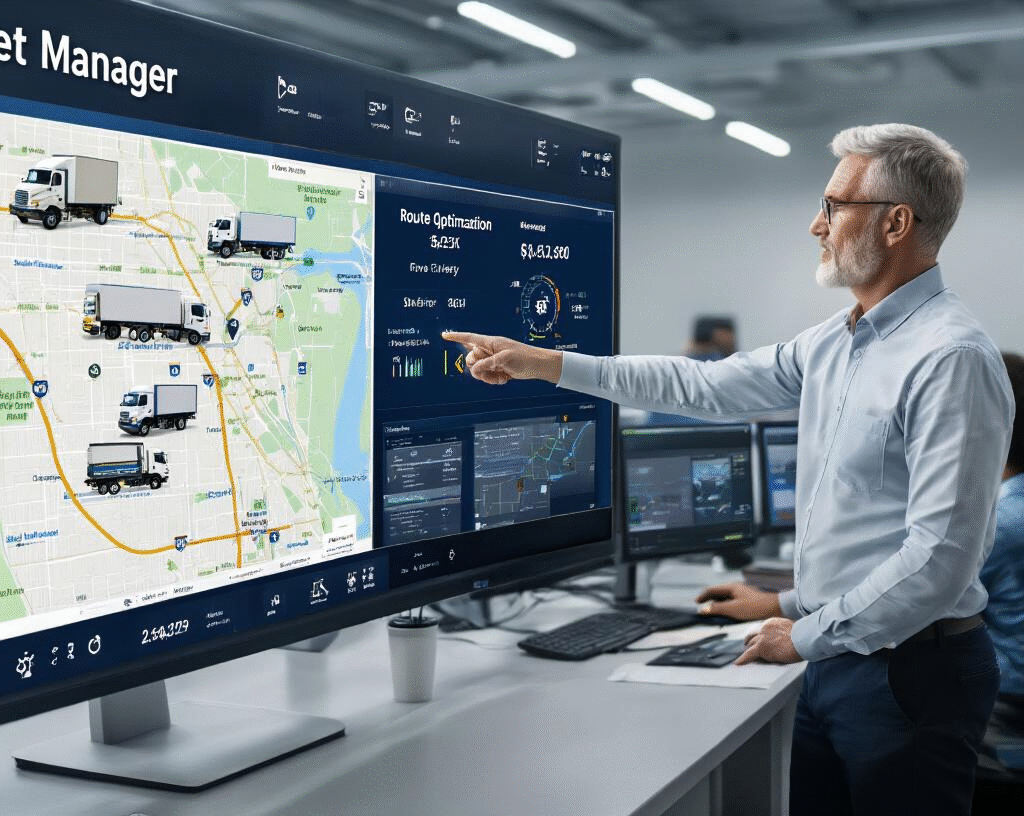
Step-by-step technology adoption plan
The road to smart dispatching doesn’t have to be overwhelming. Start small:
- Assess your current pain points – Are your drivers constantly backtracking? Fuel costs through the roof? Identify what hurts most.
- Choose tech that solves real problems – Don’t get dazzled by fancy features. Pick solutions addressing your specific headaches.
- Run a pilot program – Test with 2-3 vehicles and your most tech-savvy drivers before rolling out fleetwide.
- Integrate gradually – Connect your new dispatching system with existing tools (maintenance software, accounting systems) one at a time.
- Establish data migration protocols – Don’t lose historical route data during the transition. It’s gold for future planning.
Driver training and compliance considerations
Your dispatching system is only as good as the people using it. Truth bomb: drivers often resist new tech. Can you blame them?
Make training stick:
- Create simple, visual how-to guides (screenshots beat paragraphs)
- Pair tech-resistant drivers with early adopters
- Run short, focused training sessions (30 minutes max)
- Use real scenarios they face daily, not generic examples
Compliance isn’t just paperwork:
- Build HOS (Hours of Service) alerts directly into your dispatch system
- Create automated compliance reports for quick regulatory checks
- Set up geofencing around required rest areas
- Schedule regular refreshers on system updates
Measuring success with key performance indicators
Stop guessing if your smart dispatching is working. Track these numbers religiously:
| KPI | What it tells you | Target improvement |
|---|---|---|
| Fuel consumption per mile | Efficiency of routes | 10-15% reduction |
| On-time delivery rate | Customer satisfaction | 95%+ success rate |
| Miles driven per day | Route optimization | 8-12% reduction |
| Vehicle idle time | Driver behavior & efficiency | Under 10% of total time |
| Response time to delivery changes | System flexibility | Under 15 minutes |
The magic happens when you track these weekly, not monthly. Patterns emerge faster.
Scaling dispatch solutions as fleets grow
Your five-truck operation will eventually become fifteen. Plan for growth now:
- Choose cloud-based solutions with per-vehicle pricing that won’t punish expansion
- Establish dispatch zones when you hit 15+ vehicles to maintain efficiency
- Create dispatcher training programs to maintain consistency as you add personnel
- Document your processes while they’re still fresh (you’ll thank yourself later)
- Plan upgrade paths with your vendor before you need them
The companies that struggle most are those caught between systems – too big for their starter solution but unprepared for enterprise tools. Stay one step ahead of your fleet size.
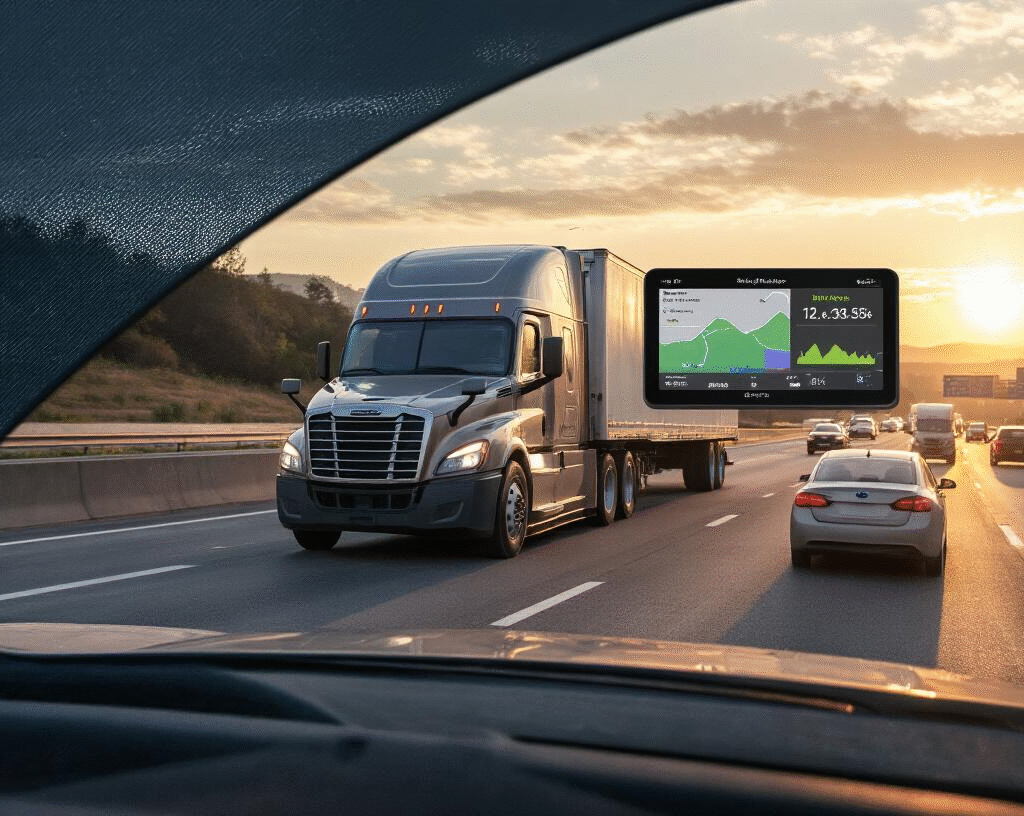
Smart dispatching technology has revolutionized the transportation industry by significantly improving fuel efficiency and route planning. By analyzing real-time data, traffic patterns, and vehicle performance metrics, companies can reduce fuel consumption while optimizing delivery schedules. The coordination of multiple vehicles through centralized systems eliminates redundant routes and minimizes idle time, creating a more sustainable and cost-effective operation.Implementing smart dispatching doesn’t need to be overwhelming. Start with clear goals, choose the right technology for your fleet size, and train your team thoroughly. As fuel costs continue to rise and environmental concerns grow, smart dispatching represents not just an operational upgrade but a competitive necessity. Companies that embrace these technologies now will position themselves for greater efficiency, reduced expenses, and improved customer satisfaction in an increasingly demanding market.

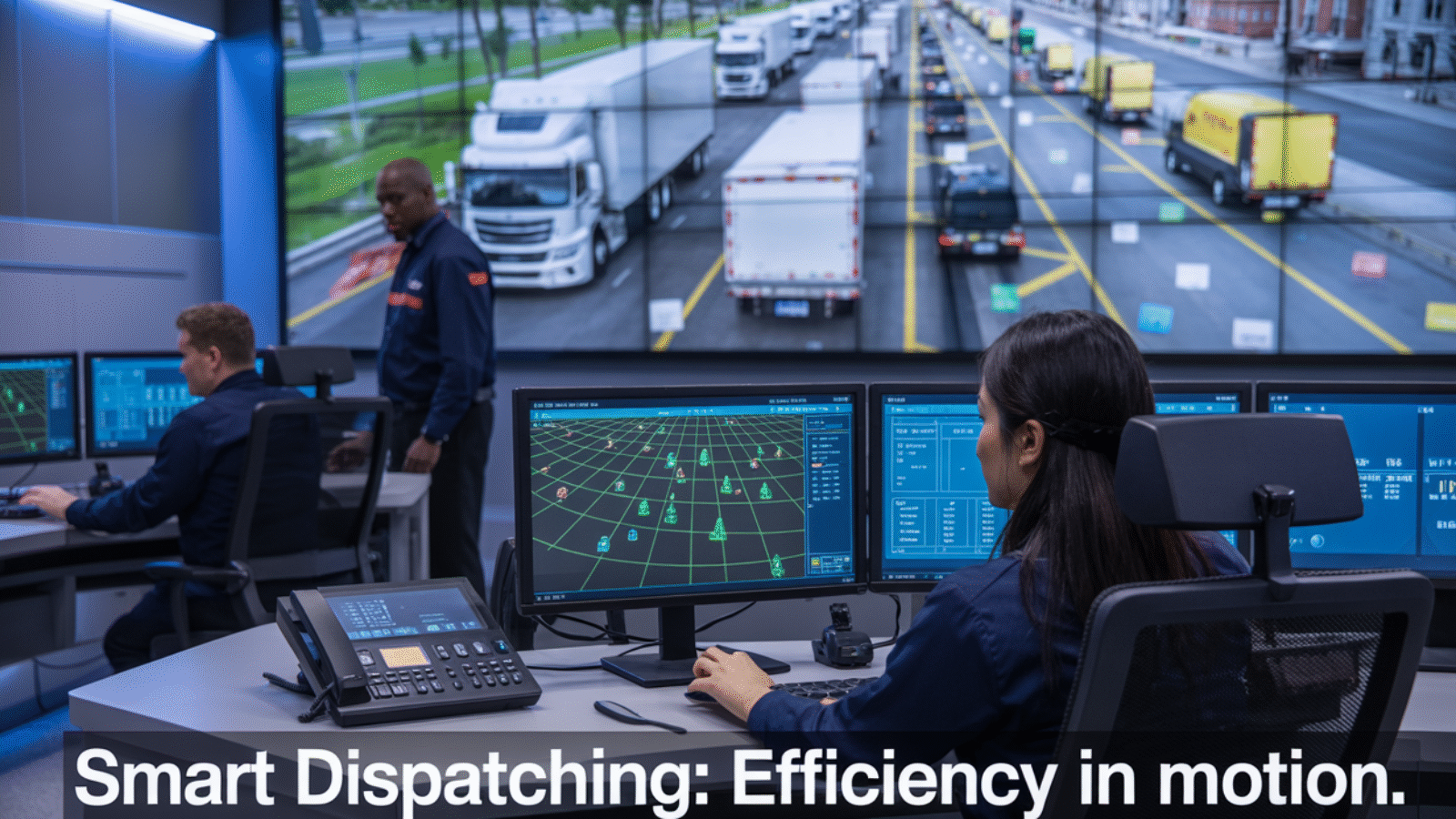
Add a Comment